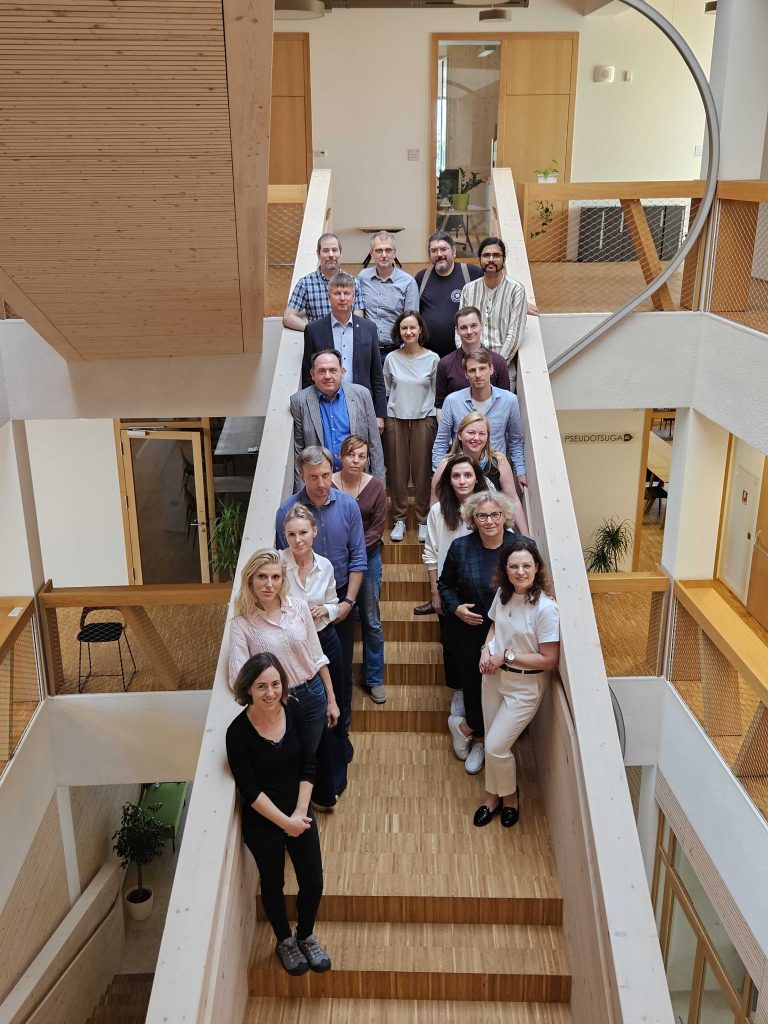
October 22, 2024


Childhood in Turku, Finland and now in Ljubljana, Slovenia.
I studied architecture. Maybe it was partly a pragmatic choice between art and science, freedom and discipline. The second thing is that I have been interested in cities most of my life, starting with studies of some city maps and their complex layout of streets, railroads, and waterways. When I was in Paris for the first time, for instance, I had to walk across the whole inner city just to examine the real scale. I have been inspired by the way some cities can be part of the identities of their inhabitants and even modify them. In this respect, living in Berlin was an unforgettable experience.
To a certain degree, there was also some personal irritation in the background of my choice of profession. I was wondering about some failures of urban planning in my hometown. Later, I saw that similar things happened across the continent, just in different scales.
For me, being an architect means to take a multidisciplinary approach for each task whether they are large or small. In this respect, we aim to be generalists rather than specialists. However, this doesn’t particularly mean creating grandiose masterplans in artistic solitude. Rather, it is about bringing together the knowledge of other engaged experts as well as finding compromises between many technical, environmental, aesthetic, economic and other demands, even in such fields as sociology, for example.
One typical working day can be just a lonely job at home on my desktop, but the next day might be full of meetings, running from one place to another. In general, it is good and refreshing when the days are different.
At its best, there is a fruitful brainstorming about all possible solutions, of which all the benefits cannot come true at the same time. If you first manage to define the goals successfully, then the rest is much easier.
Keeping balance between big lines and small details; also, managing all that within tight schedules and budgets is often challenging. A lot depends on the public spirit among co-workers if there is a bigger project going on.
This might be almost a cliché, but something like the theory of relativity by Einstein has undoubtedly had an enormous influence on the further development of science and, through many technical innovations related to it, on our modern well-being, even if some parts of the theory might be under doubt nowadays.
The more complex issue is that many of the greatest innovations can also have also a disastrous impact on our living environment if they are misused (or just misunderstood).
Perhaps I am now more fascinated by such achievements, which help us adjust our everyday life to globally decreasing material resources. The overall and long-term health impact of the use of different materials is an essential topic both for humans and the whole ecosystem.
Music has been an important part of my life; it was not so far from becoming my profession. Even if I haven’t had so much time to play my piano recently, it can still offer me a way to switch the mood after a stressing work day. I am convinced that music and architecture have something in common; architecture doesn’t exactly need to be “frozen music” as someone has put it, and music is not melted architecture! But I can’t imagine a more meditative piece of art than the last piano sonatas of Beethoven, the contrast of architectonic structures and poetic harmonies hidden between the notes. Besides, I am a fan of mature music dramas by Richard Wagner as well as the improvisatory character of jazz and, nowadays, increasingly open-minded towards other styles of music as well. And I am not afraid of heavy literature a ’la James Joyce either, if I have time to get into it.
During the hot summer holiday travel, we had the original recording of the “Girl of Ipanema”, performed by the late João and Astrud Gilberto and Stan Getz, in the car stereo. And, yes, we saw “Once Upon a Time in Hollywood” in an outdoor theatre. If we are in a small village on a Croatian island, I like to buy the Frankfurter Allgemeine in a kiosk and read the feuilleton pages on the beach.
Green hills with a small church on almost every hilltop. Quite a lot of forests like in my native country, but the tree trunks are thicker.
Definitely the most fascinating thing about Slovenia is that it’s like “Europe en miniature”. Everything is compactly together from the Alps until the Mediterranean. And if that’s not enough, some bigger cities and mountains are still within the distance of a one-day trip.
Although the Mediterranean is a splendid and has a very rich in history, and the centre of Ljubljana is a pretty city with its riverbanks, I am also sometimes missing the riverbanks of Turku, my native city, and the archipelago where the river Aura flows.
The strip between Izola and PIran is very picturesque and full of nice activities but still in harmony with nature.
What makes you enthusiastic?
When someone is giving his or her best.
The way I met my wife – just few blocks away from my home in Turku – could be seen in this way.
Literally two exhibitions that I have put together with my wife. But in broader scope, it means the almost endless potential of wood for different purposes.